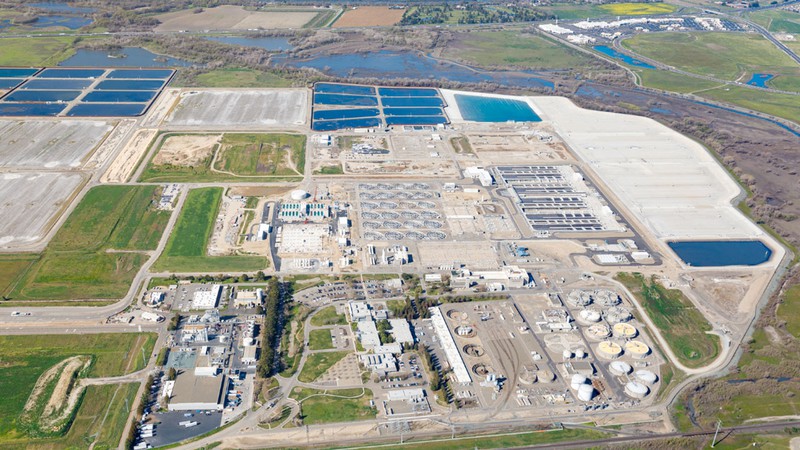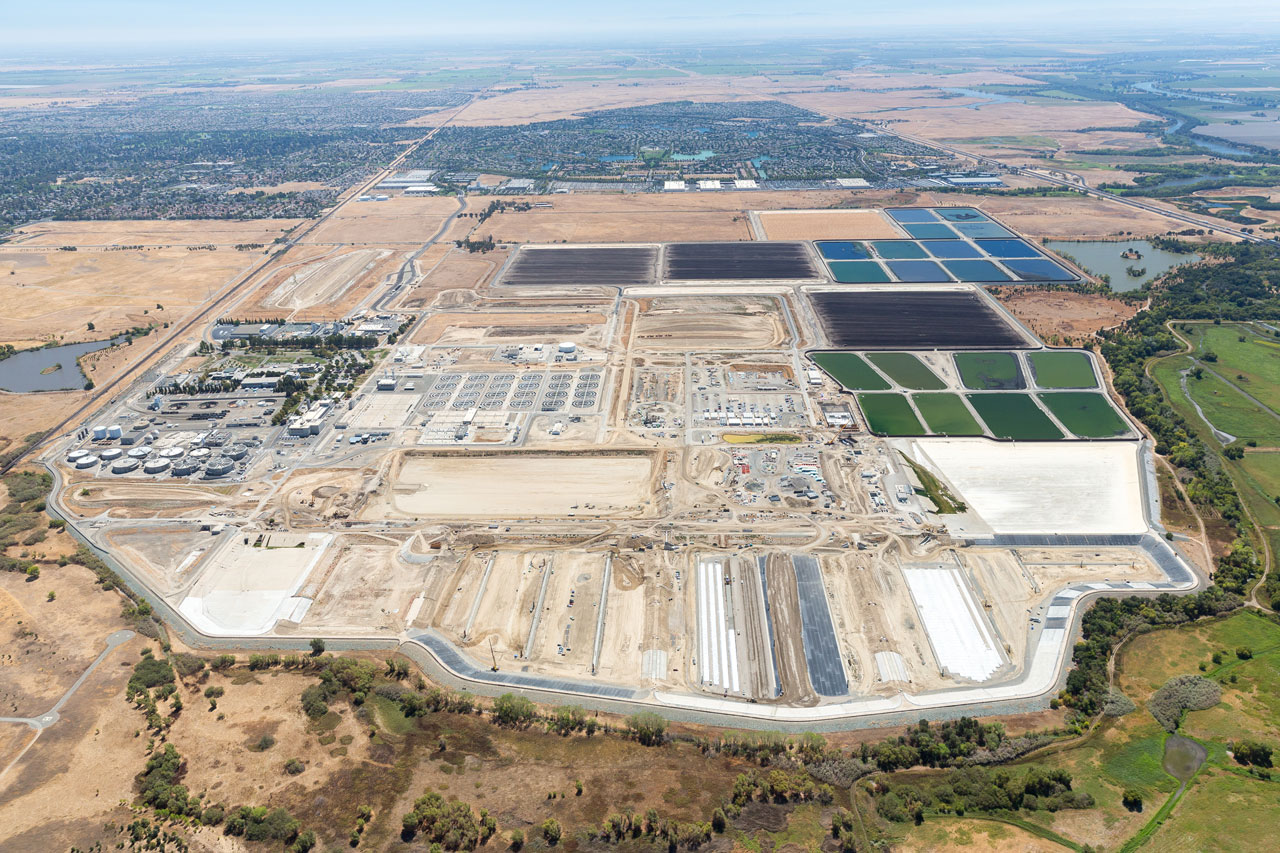The Sacramento Regional Wastewater Treatment Plant’s new system makes its discharge into the Delta dramatically cleaner.

The $1.7 billion EchoWater Project overhauled the Sacramento Regional Wastewater Treatment Plant, which serves some 1.6 million people. Courtesy of Regional San
Originating in Northern California’s rugged Klamath Mountains, the Sacramento River flows southward for hundreds of miles, passing through lakes, canyons, and volcanic plateaus before arriving in the Sacramento region.
As the river continues to flow south, it intersects with the San Joaquin River at the western edge of the Central Valley, helping create the Sacramento–San Joaquin River Delta, a 1,100-square-mile expanse that serves as a wildlife habitat, critical agricultural land, and California’s main source of drinking water. It is into this vital and delicate system that the Sacramento Regional Wastewater Treatment Plant discharges its wastewater.

“We had a target on our back for sure,” said Christoph Dobson, general manager and district engineer with Sacramento Regional County Sanitation District (Regional San), which owns and operates the Sacramento Regional Wastewater Treatment Plant. “We’re one of the largest inland dischargers west of the Mississippi River, so that gets a lot of attention.”
It certainly got the attention of the Central Valley Regional Water Quality Control Board, the state agency that regulates wastewater dischargers in the Sacramento region. In 2010, the Regional Water Board issued a discharge permit to Regional San that included strict new requirements to help improve water quality in the Sacramento River and alleviate ecological problems in the Delta, which supplies fresh water to two-thirds of the state’s population and millions of acres of farmland. The final deadline to meet all new requirements was set for May 2023.
And now, some 13 years later, Regional San is wrapping up one of the most complex and impactful public works projects in the region’s history. The $1.7 billion EchoWater Project overhauled the Sacramento Regional Wastewater Treatment Plant, which treats 135 million gallons a day and serves some 1.6 million people. The expanded facility is the second-largest treatment plant of its kind in the nation.
“There was just enough time to meet the regulatory deadline,” Dobson said. “There was very little slack in the schedule. We basically had to remove the heart of the plant and replace it with a new one. That’s the only way we could meet the new requirements.”
The technical name for this new “heart” is the biological nutrient removal (BNR) facility, which spans nearly 18 football fields. Consisting of eight, 25-foot-deep basins lined with thousands of oxygen tubes, the BNR system removes 99 percent of ammonia and 89 percent of nitrogen from the wastewater.
Patrick Pulupa, an executive officer with the Central Valley Regional Water Board, said that in the years leading up to the new water discharge requirements established in 2010, the California Department of Fish and Wildlife and other agencies were noticing a precipitous decline in native fish in the Delta.
“One of the culprits was the ammonia discharge coming out of the Sacramento plant,” Pulupa said. “At the time, Regional San viewed itself as having a cutting-edge facility, which they absolutely did back in the mid-1980s when it opened. But with the ongoing concern about protecting the Delta, we asked for a renewed focus on eliminating toxins and protecting aquatic life.”
Updating the plant was no easy task, as the facility, located in Elk Grove, was built in the 1970s and came online in 1983. The aging infrastructure and filtration systems needed a major overhaul, and it took years of planning and design before construction could begin. Approximately 5,400 people worked on the project, including contractors and design consultants. In all, the EchoWater Project used 41,350 tons of steel and 225,000 cubic yards of concrete, and excavated 2.1 million cubic yards of soil.
“Putting together a project of this magnitude took a lot of preparation and work,” Dobson said.

According to Regional San, EchoWater was originally projected to cost $2.1 billion to design and construct. Regional San officials indicate they implemented efficiencies that helped reduce the impact on customers’ rates. The project also received nearly $1.6 billion in low-interest financing from the state’s Clean Water State Revolving Fund. As a result, in May 2019, the Regional San Board of Directors rescinded previously approved customer rate increases for the last three years of the five-year rate increase plan. The current rates are $37 per month for each single-family residence, $27.75 a month for each multi-family dwelling unit, and a basic $37 commercial rate.
During the project, Dobson said one of the biggest challenges Region San encountered was labor shortages. Contractors often had trouble finding skilled workers, especially as the state was working on other big projects like the Oroville Dam, which had to be repaired in 2018 following the deterioration of the main spillway. And the COVID-19 pandemic only exacerbated the problem.
“But the biggest challenge in all of this is that we had to continue operating the existing plant while we were building this very complicated system all around it, all while meeting our permit requirements,” Dobson said. “Sometimes it seemed insurmountable but we got it done.”
In producing cleaner water for discharge to the Sacramento River, the overhauled plant will also help protect the Delta downstream. Over the years this natural resource has faced a host of challenges, including floods, rising sea levels, earthquake damage, aging levees, invasive species, and contaminants from a variety of sources.
“The Delta is so complex, and we’re basically just turning one dial, but there are many potential contributors to the problems in the Delta,” Dobson said. “There's really no magic bullet that’s going to solve all the problems.”
Pulupa with the Central Valley Regional Water Board agrees: “We’ve reduced one of the big dischargers,” he said. “We don’t know how it’s all going to come together, but it’s been a cooperative effort and a step in the right direction.”
Long form articles which explain how something works, or provide context or background information about a current issue or topic.